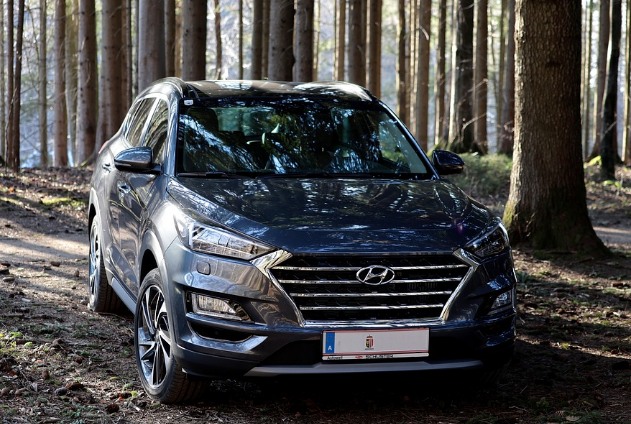
Is An SUV A Truck Or Car – What You Need To Know
Let’s examine the definition of an SUV and the specifics of each type in this guide.
An SUV and a pickup truck might appear to have little to no visual distinction to the untrained eye. These vehicle types aren’t all the same, though. While both have powerful engines, long beds, and roomy interiors, trucks frequently have an open cargo area while SUVs are completely enclosed.
What is An SUV?
According to BuyaCar.co, Another term in the US for the popular family vehicle is the “sport-ute.” The term “SUV” refers to a broad category of four-wheel-drive vehicles that can go off-road and have a lighter truck-like feel. While the term “SUV” can refer to larger vehicles like the Range Rover, Chevrolet Suburban, and Jeep-like SUVs, it can also refer to smaller cars like the Honda CRV and crossover SUVs that lack four-wheel drive and have only a limited ability to go off-road. The term “sport-utility” refers to the SUV in more ways than one. It also implies that the vehicle is capable of carrying out tasks and possesses outdoor-specific qualities, such as the ability to traverse various terrains.
What Makes a Vehicle An SUV?
It makes sense to mistake an SUV for a truck (let’s stick with pickup trucks). After all, an SUV, or Sport/Suburban Utility Vehicle, is a hybrid vehicle by definition. SUVs were created with the intention of fusing the benefits of a pickup truck, a passenger car, and a minivan into a single vehicle. Specifically, to design a car with comfortable ride, roomy cabin, impressive off-roading capabilities, and towing capacity.
If an SUV had some qualities of a pickup truck (and vice versa), it wouldn’t be shocking. Nonetheless, here’s a non-exhaustive list of attributes that can help differentiate an SUV from the rest of the vehicle segments:
- High-spec engine
- AWD (All-Wheel Drive) system
- Reduced emissions and better fuel mileage
- High ground clearance
- Longer wheelbase
- Axle articulation
- Off-road-oriented suspension
- Large-diameter tires
- Tall passenger cabin and seating position
- Locking differentials
- Body-on-frame or unibody construction
- Modern design/styling
How Popular is the SUV?
MarkLines estimates that in 2017, SUVs made up 36.8% of the global market for passenger vehicles. In 2019, SUV sales increased 2.6%. New SUVs or light pickup trucks made up more than a million of those sales. In contrast, the year-over-year decline in car sales for 2019 was 1.3%, and the decline in December was 5.8%.
About the SUV
According to Cars.com, the SUV is now considered more of a light truck than a car in the US and several other nations. This lowers the fuel efficiency standard for the SUV. The SUV feels and looks like a cross between a truck, a minivan, and the typical American family car. Prior to switching to a unibody frame, where the chassis, body, and floors were all on one structure, SUVs were first constructed on a truck chassis. Currently available SUVs have this. In contrast to historical off-roaders, which only had two doors, most contemporary SUVs have four to five doors to accommodate families.
Primary Types of SUVs
The different classifications of SUVs are based not so much on styling nor configuration but on their overall dimensions and are as follows:
Mini/Sub-compact SUVs
These minute vehicles are smaller than the Mini Countryman and very popular in countries with heavy taxation on large vehicles. Top contenders in this subsegment include Suzuki, Jeep, Nissan, Volkswagen, and Toyota.
Small/Compact SUVs
The dimensions of these SUVs are typical for European C-segment passenger cars, making them simple to maneuver and park. They make excellent daily commuting and family vehicles because of the roomy cabins. With their top-notch 2021/2022 releases, manufacturers including Hyundai, Mazda, Honda, Ford, and Subaru (among others) take the lead.
Trivia: The Kurogane Type 95, a Japanese SUV used as a terrain reconnaissance vehicle and produced for the army from 1936 to 1944, has a nickname that translates into “All-Wheel Drive.”
Mid-size SUVs
These SUVs are very alluring to commuters and adventurers alike due to their practical size and impressive all-terrain capabilities. In addition, they are priced fairly in the middle. The majority of recent models are feature-rich and appear as upscale as luxury SUVs, whereas some older options still have a pickup truck’s DNA. The Jeep Grand Cherokee, Hyundai Palisade, and Kia Telluride fall under this category.
Full-size SUVs
These cars were initially created using the full-size pickup truck chassis, as the name suggests. Some do, however, already have their own specific platforms today. For this SUV class, their increased length has not changed, giving the interior and cargo space more space.
Extended Length SUVs
The main distinction between this sub-segment and a full-size SUV is that the latter has an overall length of at least 17.1 feet (205 inches). Due to their generous passenger and cargo space, these long-bodied sport utility vehicles are most popular in North America. The Jeep Wagoneer and Ford Expedition from 2022 are ideal illustrations of long-wheelbase SUVs.
Crossover SUVs
CUVs are occasionally viewed as the odd one out of all the SUV types because they are built on a platform designed for passenger cars. They represent more than 50% of the American market for SUVs as a whole. against other SUVs. CUVs have superior ride comfort and interior styling, but they are less capable of towing and off-roading.
You would assume that the boundary between the two is very hazy (if not nonexistent) based solely on dimensions, wouldn’t you? But that wouldn’t be true, unfortunately. A pickup truck’s cabin is always enclosed while the cargo area is open with low sides and a tailgate, in addition to its length, width, and height.
Even if SUVs had the same dimensions and payload as pickup trucks, they could never be referred to as such.

Is An SUV Considered a Truck?
The size of some full-size SUVs is very comparable to that of a typical pickup truck. For instance, the overall measurements of a 2021 Jeep Gladiator are 18.17 x 6.15 x 6.25 feet (218 x 73.8 x 75 inches, L x W x H). These vehicles are excellent for carrying a load because even their cargo beds are quite roomy.
A car, on the other hand, is a small to medium-sized, four-wheeled vehicle constructed on a unibody platform to transport people and goods.
And as we’ll see in this article, some SUVs are constructed using a unibody, similar to how cars are, while others use a body-on-frame framework, like trucks.
However, each region and each nation has its own definition of an SUV. Some SUVs are considered light trucks in the USA instead of cars, but a vehicle must have 2 seats and a storage space to qualify as a truck.
SUV Pros
According to All Car Leasing, SUVs combine the comfort of a station wagon with the storage and towing capabilities of pickup trucks. Large interior areas and two or three rows of chairs make up the combination. SUVs give their owners flexibility in moving both people and goods. With all the room in an SUV, owners can pick up groceries, transport luggage for road trips, transport sporting goods, and still have enough seating for a bigger group since an SUV frequently has seven seats.
Despite the fact that SUVs don’t have the best fuel efficiency, Autos.com notes that this is because they were initially designed to help cars navigate rough terrain without damaging the undercarriage. They have a high center of gravity and upright seating positions thanks to this design. They have a strong engine and excellent towing capacity as well. Today, there are two categories of SUVs. The Toyota 4Runner is an example of one type that is used for off-roading or hauling heavy loads, while the other is prized for its svelte design and safe handling. Like the Ford Flex, both can navigate slick driving surfaces and small bodies of water.
SUV Cons
According to All Car Leasing, it’s crucial to weigh the drawbacks before choosing an SUV as your next car. They are difficult to maneuver due to their size and bulk, especially when looking for a parking spot. They have been criticized for their environmental impact in addition to being expensive and less fuel-efficient than smaller vehicles in the same price range.
Advertisement – Continue Reading Below
SUV History
The 1955 Gaz-M20, according to Cars.com, was the first mass-produced four-wheel drive passenger car with a unibody frame. The Lada Niva, a relatively small SUV-style car from 1977, featured a coil-sprung independent front suspension in addition to a unibody design. The crossover SUV was introduced after this vehicle.
SUVs with a unibody frame were uncommon up until the 1984 Jeep Grand Cherokee XJ’s commercial success, according to AutoList. All Jeep SUV models didn’t begin using unibody construction until the 1993 Jeep Grand Cherokee. According to The Truth About Cars, there was one thing that remained constant: 2-door SUVs had never been as well-liked by consumers, probably because they weren’t as convenient.
SUV Evolution
The first SUV prototypes appeared in the years leading up to and including World War II. The first models were large, equipped with four-wheel drives, had roomy interiors, and were designed to travel over difficult terrain. The term “SUV” was first used in 1974 Jeep Cherokee SJ full-size vehicle brochures. The AMC Eagle, which is available in coupe, sedan, and station wagon body types, can provide luxury, comfort, and convenience for its passengers, according to Auotrader.
It’s crucial to consider all the options when looking for a vehicle that fits your lifestyle. You must take into account the item’s price as well as its intended use as well as its size, functionality, safety, comfort, and ability to meet your storage needs. Your understanding of the capabilities of each type will be aided by the additional information provided in this SUV guide. Please discuss your needs with your sales associate if you need assistance in limiting your options.
Pickup Trucks Explained
The first pickup trucks, dating back to 1902, were sold with only the chassis attached; bodies were added separately by third parties. Later versions of the design included carrying trucks with 3/4 and 1 ton weight capacities, a cab, and a wooden body.
Later on, the drivetrain was enhanced, and the cabin was enclosed with windows and a windshield. The pickup truck was still primarily used for work or farming despite all these changes.
Consumer usage of these light-duty trucks did not change significantly until General Motors introduced pickup variants intended for private ownership in the early 1930s. When end-users began buying these trucks for lifestyle/recreational purposes rather than as a workhorse in the 1950s, it became clear that this shift in perspective had occurred.
The late ’50s saw the rise of “crew cabs” – perhaps one of the first 4-door pickup configurations to be ever mass-produced. Since then, pickup truck concept and design as a whole have exponentially developed, giving rise to the purpose-built behemoths we see on the market today.
FAQs
What is the Difference Between a Crossover Suv and a Normal Suv?
The term “crossover SUV” refers to an SUV model that combines the characteristics of both an SUV and a crossover vehicle. Crossovers are intended for commuting in cities and are typically smaller in size than SUVs.
Crossovers have a shorter wheelbase than SUVs and are frequently constructed on the same platform as compact cars. SUVs have a longer wheelbase and are built on a platform similar to that of a truck. The distance between a vehicle’s front and rear wheels is known as the wheelbase.
SUVs can accommodate more passengers and cargo thanks to their longer wheelbases. SUVs typically have more interior space than crossover SUVs, but they also have a higher center of gravity and are heavier.
A crossover SUV may have a lower ground clearance and a higher ride height than a regular SUV. This translates to a crossover SUV having an advantage over a regular SUV when driving through muddy and uneven off-road terrain.
What is the Difference Between a Truck and An Suv?
The type of driving they are intended for is the main distinction between SUVs and trucks. Trucks are made for driving on the highway; SUVs are made for driving off-road.
SUVs are built for driving through sand dunes, rough terrain, and mud. SUVs can also pull trailers or heavy machinery. Trucks can transport more cargo than SUVs, but SUVs can also transport more passengers. Truck-based platforms are shared by SUVs and trucks, but trucks are larger and have a longer wheelbase than SUVs.
SUVs are lighter than trucks and also have a lower center of gravity. SUVs offer more space for passengers than trucks do, but trucks are able to transport more goods. Because they are typically built with a higher ride height than trucks, SUVs can navigate muddy and uneven off-road terrain more easily than trucks can.
Which is Better for Families: a Crossover Suv Or a Truck?
A truck might be your best option if you need to transport numerous passengers or large objects like construction equipment. Because they are typically smaller than trucks, SUVs have a lower passenger capacity.
SUVs perform off-road driving superior to trucks. Due to their lower center of gravity, SUVs are simpler to maneuver through rocky, muddy, and uneven off-road terrain. SUVs also have a higher ride height than trucks, which enables them to navigate ruts and other obstacles that trucks typically can’t.
Due to their size and ease of off-road driving, SUVs are better for families than trucks. Because they have more space for passengers than trucks do, SUVs are also preferable for families who need to transport passengers.
Which is Better for Businesses: a Pickup Truck Or a Van?
A van or pickup truck may be a better option than an SUV if you need to transport heavy objects or lots of cargo. Although they are smaller than SUVs, pickup trucks and vans are constructed on the same truck-based platform as SUVs.
Typically smaller than SUVs, vans and pickup trucks have a lower passenger capacity. Because SUVs are only designed for on-road use, vans and pickup trucks are better for businesses.
SUVs are designed to be driven both on and off-road, making them suitable for both business and leisure use. SUVs are better for off-road driving only, so vans and pickup trucks are better for businesses. In contrast to vans and even some pickup trucks, SUVs are frequently built for off-road use, making them less adept at driving on pavement.
Final Words on SUVs Being Trucks Or Cars
The distinctions between different classes of motor vehicles are becoming increasingly hazy as a result of ongoing improvements in vehicle design and technology.
These days, there are SUVs that have the same capabilities and platforms as pickup trucks, while others resemble passenger cars.
It can be difficult to tell the difference between passenger cars, SUVs, and trucks whether you’re a first-time or seasoned car buyer.
But keep in mind to focus on a vehicle’s unique features as opposed to its classification. Nowadays, the boundaries are more hazy.



Average Rating